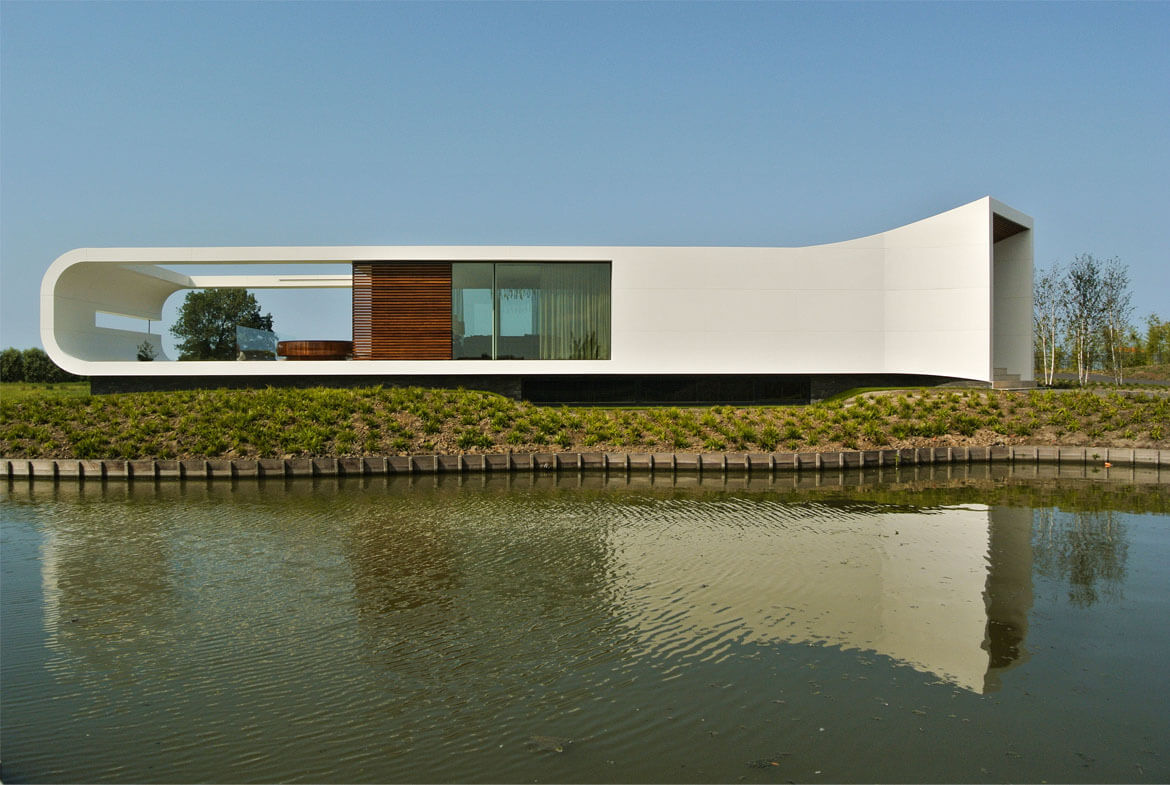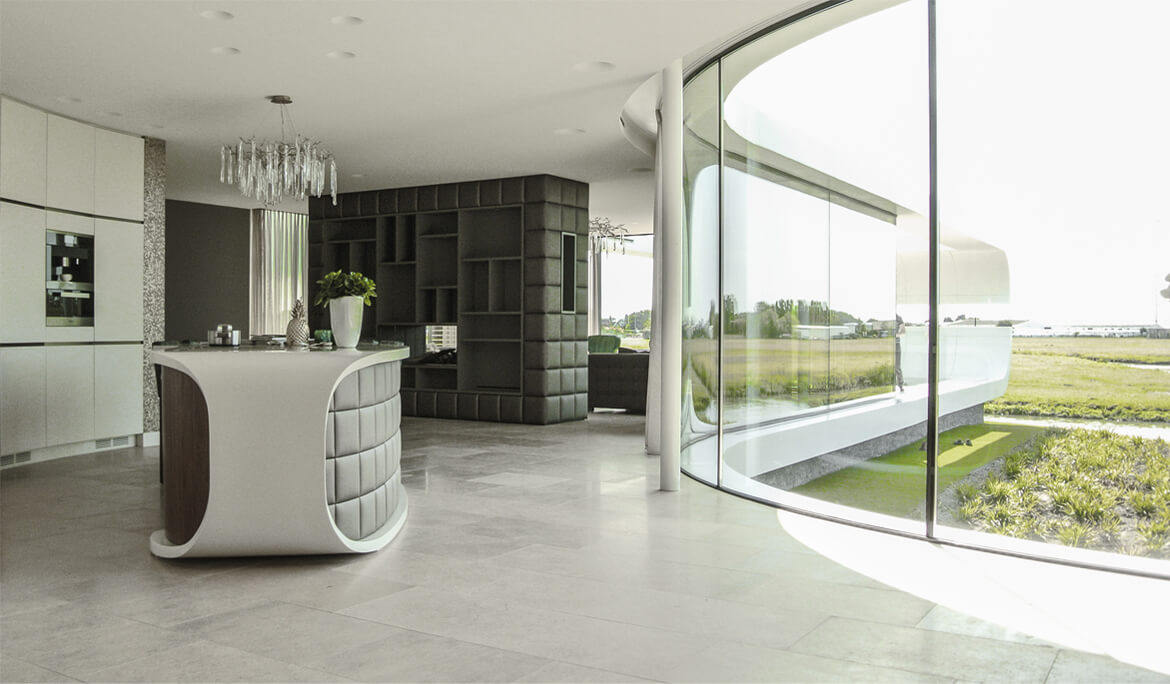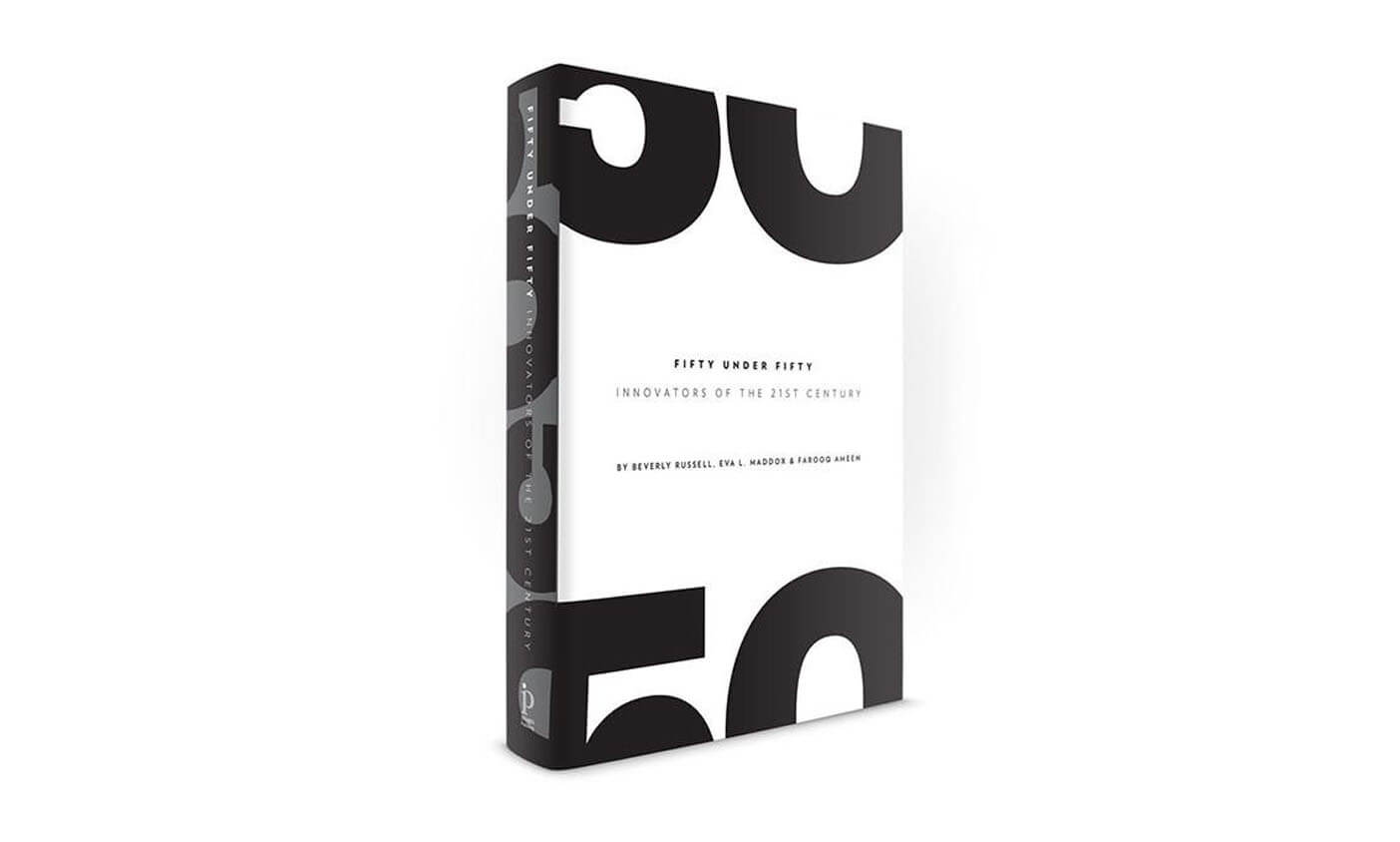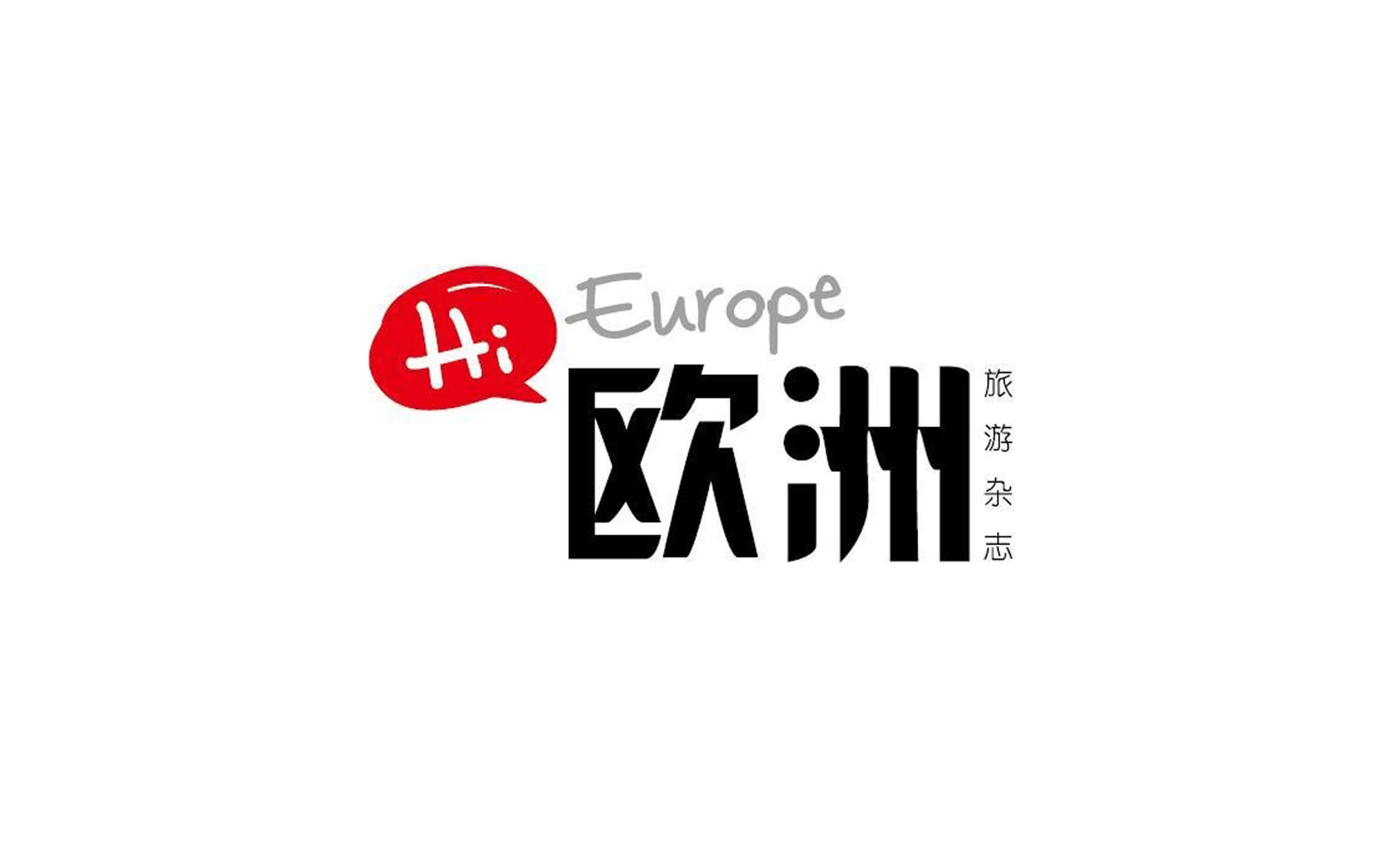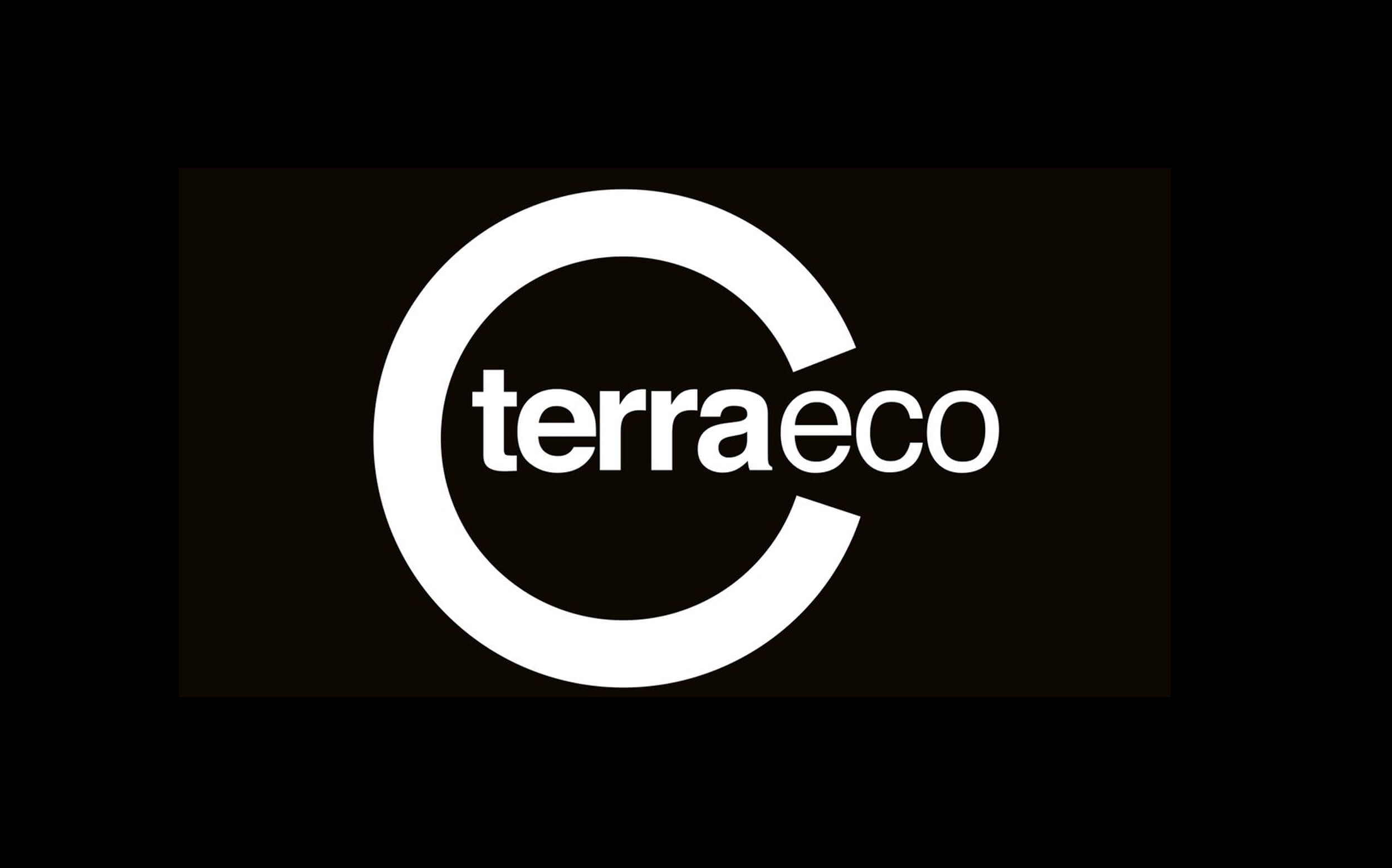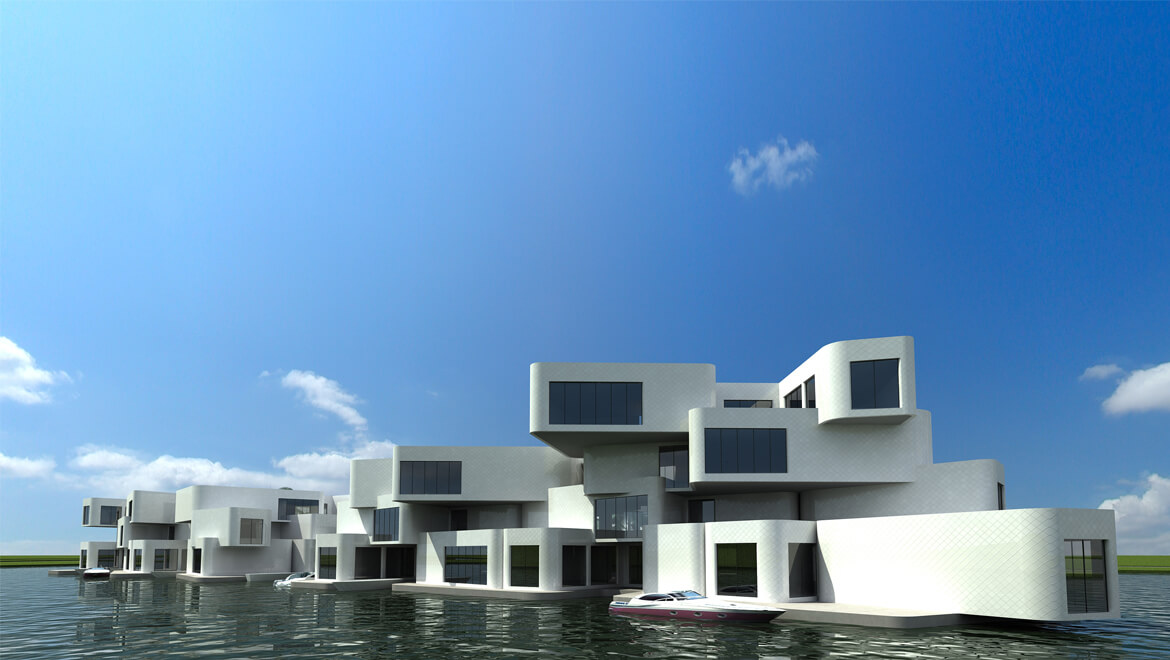Ciudades Anfibias
By Beatriz Portinari
CLUB + RENFE

Los arquitectos del futuro proponen una Atlántida biososteniblecomo respuesta al cambio climático y la utopía de una colonización oceánica.
“El mar no pErtEnEcE a los déspotas. En su superficie, aún pueden ejercer sus inicuos derechos, pelearse, devorarse y transportar todos los horrores terrestres, pero a treinta pies de profundidad, su poder
cesa. ¡Ah, señor, viva usted en el seno de los mares! ¡Solo ahí existe la independencia! ¡Ahí no reconozco señor alguno! ¡Allí soy libre!”. Con estas palabras, Julio Verne convirtió al capitán Nemo y su Nautilus en los pioneros de la llamada “colonización oceánica”, en 1870. Casi 200 años después de 20.000 leguas de viaje submarino, ingenieros y arquitectos ofrecen propuestas viables que van desde hoteles flotantes o flotels a cruceros-residencia para millonarios como The World y finalmente la utopía social y política de las naciones semi-sumergibles que propone el Seasteading Institute.
Pero, ¿por qué querría el hombre vivir en futuristas ciudades acuáticas?
Quizá por placer, por evadir impuestos en aguas internacionales o por pura necesidad medioambiental. Según los expertos en cambio climático y el Informe España: hacia un clima extremo, publicado por Greenpeace en 2014, se espera que a finales del siglo XXI la subida del nivel del mar por el deshielo del Ártico provoque una catástrofe climática y humanitaria que afectará al uno por ciento del territorio de Egipto, el 7% de Países Bajos, el 17% de Bangladesh y hasta el 80% de las Maldivas. En España, las mediciones indican que “durante la segunda mitad del siglo XXI, hasta 202 hectáreas de terreno se encontrarán en riesgo de inundación en la costa vasca. De esta extensión, la mitad corresponde a terrenos urbanizados, tanto zonas industriales como residenciales”. El peligro es real. Las estimaciones más pesimistas dicen que en 2030 habrá 50 millones de refugiados climáticos en el planeta, que ascenderían a 200 millones en el año 2050. ¿Qué hacer con esta población sin tierra? Más allá de previsiones, la evidencia está en el archipiélago de Kiribati, al noreste de Australia, donde 100.000 habitantes buscan territorio para trasladar todo un país porque el suyo ha comenzado a desaparecer bajo el mar. El gobierno de Kiribati ha comprado terreno en las islas Fiji para instalar a su población e incluso se ha planteado los diseños anfibios de uno de los arquitectos más preocupados por el medio ambiente, Vincent Callebaut, autor de los prototipos acuáticos Lilypad, Physalia y el más reciente Aequorea.
‘aRQuibiÓTica’ conTRa El cambio climáTico
“La anticipación urbana es fundamental para crear la ciudad del mañana, que considero imprescindible en la transición energética. Lo que llamo ‘arquibiótica’ es la solución
biotecnológica de la arquitectura a la crisis ambiental que sufrimos. Me inspiro en el biomorfismo, el biomimetismo y
la biónica, donde la ingeniería puede repetir esquemas de la naturaleza y aprovechar las nuevas tecnologías de comunicación”, explica Callebaut, a quien el Ayuntamiento de París
acaba de encargar el rediseño de la ciudad. De momento, sus audaces prototipos todavía no han encontrado océano donde iniciar la revolución verde.
Quien sí ha comenzado la construcción real de un atolón artificial para salvar a su población del mar es el Gobierno de las islas Maldivas, que ha firmado una alianza comercial con la empresa holandesa Dutch Docklands, experta en ganar terreno al agua. Si el entorno paradisíaco de las Maldivas va a desaparecer bajo el mar, nada mejor que empezar a construir una réplica flotante para mantener el turismo. Para ello se ha encargado el proyecto The 5 Lagoons al estudio de arquitectura Waterstudio, que dirige Koen Olthius, considerado “uno de los 100 eco-arquitectos que cambiarán el mundo” y que apuesta por el paso de las ciudades verdes a las ciudades azules sobre el agua. “No debemos tener miedo al posible aumento del nivel del mar, sino verlo como una oportunidad para mejorar nuestras ciudades. Si la costa española se puede ver afectada, debería empezar hoy mismo a considerar soluciones. Estas plataformas flotantes deberían ser eco-sostenibles, más duraderas y flexibles”, cuenta Olthius. El arquitecto va más allá e imagina “bellos parques en el agua, dinámicos, capaces de cambiar de forma y función en cada estación; el turismo ha sido siempre muy importante en la economía española y creo que estas extensiones flotantes podrían atraer más turistas.
Podría aportar al mismo tiempo seguridad y prosperidad a la costa. La tecnología está disponible, sólo sería necesario que fuera económicamente viable”.
El Seasteading Institute, creado en 2008 con importantes inversores como Peter Thiel, fundador de PayPal, va más allá y propone ciudades-estado independientes en aguas internacionales. Sin embargo, su utópico proyecto Floating City aún no ha visto la luz. “Técnicamente las ciudades anfibias son viables, pero deberían responder a una necesidad económica, legal y política real porque de lo contrario el proyecto no es rentable. Si tienes una plataforma que no pertenece a ningún país, no puedes defenderte de ataques piratas, por ejemplo. Para el problema del cambio climático existen soluciones más baratas como se ha visto con el relleno de tierra que está haciendo Singapur en su costa”, advierte el Ingeniero Naval y Oceánico, Miguel Lamas, experto en plataformas flotantes y antiguo colaborador del Seasteading Institute. En su tesis Establecimiento de comunidades autónomas en alta mar: opciones presentes y evolución futura hace un análisis realista de los posibles escenarios. Aunque estas comunidades en alta mar serían beneficiosas porque fomentarían el uso de las energías renovables de origen marino y la protección del hábitat oceánico, hoy por hoy no existe economía ni sociedad que respalde a corto plazo un costoso proyecto como las Ciudades Flotantes autónomas. Parece que la utopía de la colonización oceánica tendrá que esperar.
AquaTecture, Buildings and cities designed to live and work with water
By Robert Barker & Richard Coutts
RIBA Publishing
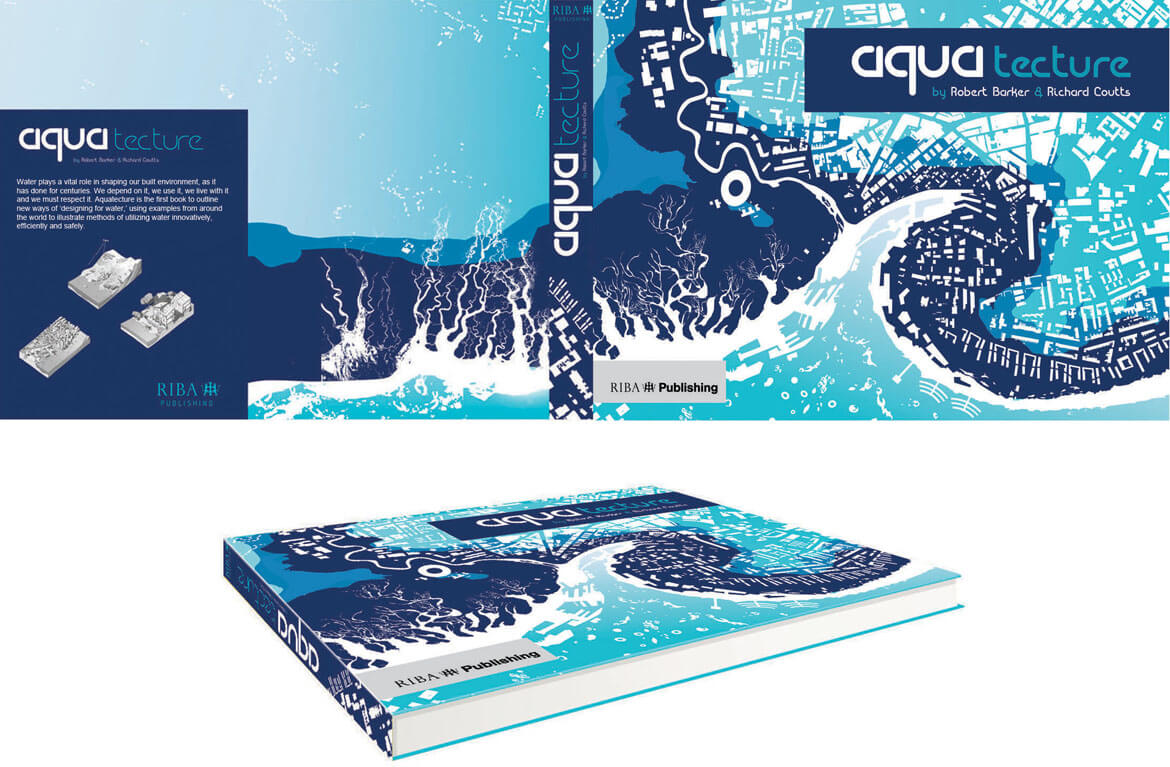
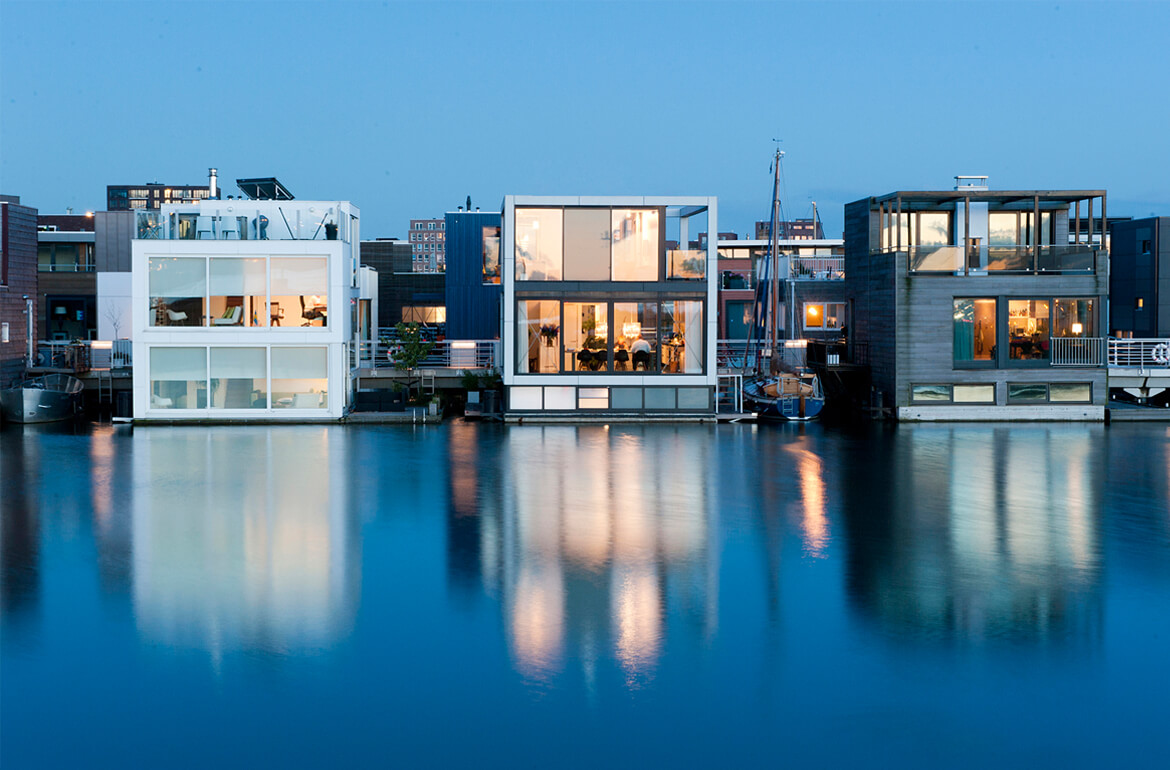
Water plays a vital role in shaping our built environment, as it has done for centuries. We depend on it, we use it, we live with it and we must respect it. Aquatecture is the first book to outline new ways of ‘designing for water,’ using examples from around the world to illustrate methods of utilizing water innovatively, efficiently and safely.
The first part of the book explores the historical relationship between water and architecture, examining how cities and civilisations have been drawn to water and have attempted to control it. The chapters go on to assess how this relationship has changed over time, and introduce readers to a range of brand new techniques that will revolutionise the way we think about water, design and urban planning. Solutions such as amphibious housing, wet-proof buildings, zero carbon development, rain gardens, flood storage and new methods of waterfront design are discussed and their effectiveness assessed.
Full colour illustrations and international case studies are used throughout the book to bring these new theories to life; practical, technical advice sits alongside truly ground-breaking and ambitious ideas for the future. This book is an ideal reference tool for all architects, urban designers, planners and sustainability experts who have an interest in creating a beautiful, sustainable, intelligent and pleasurable built environment on land, in water and with water.
Koen Olthuis one of fifty innovators of the 21th century
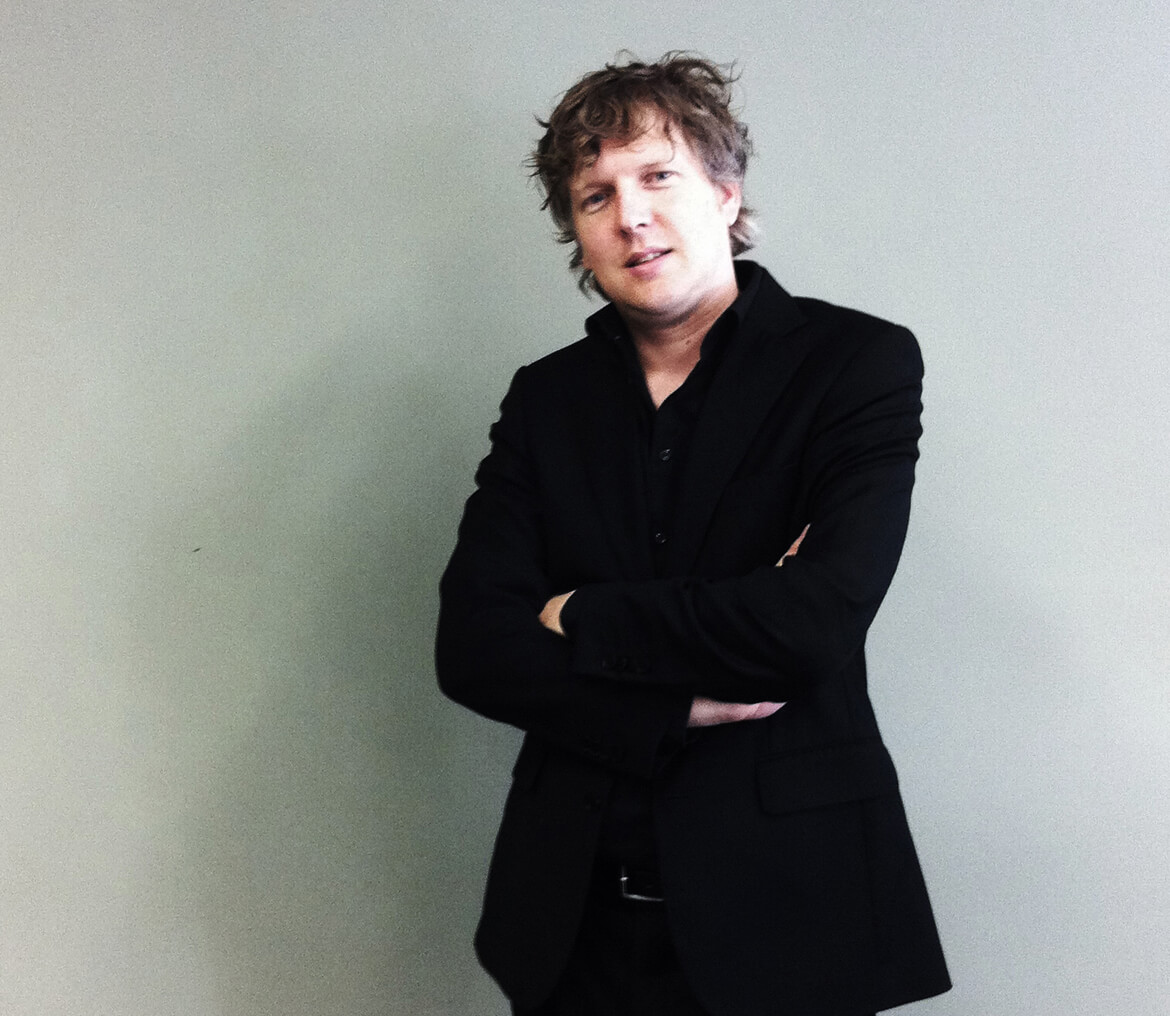
Koen Olthuis selected as one of the Fifty Under Fifty innovators of our time. After a world-wide search of 50 top architecture and design firms by the editors, lead author Beverly Russell along with Eva Maddox and Farooq Ameen help bring together a unique body of work; all partners in these firms will be 50 years old or under at the time of publication, and represent a forward-thinking generation of creative people, aware of global issues that urgently need solutions through imaginative design.
A distinguished five-person jury presided over the final selection: Stanley Tigerman, founding partner, Tigerman McCurry, Chicago; Ralph Johnson, design principal, Perkins+Will, Chicago; Jeanne Gang, founder Gang Studio, Chicago; Marion Weiss, founding partner, WEISS/MANFREDI, New York; and Qingyun Ma, Dean of Architecture, University of Southern California, and founder MADA s.p.a.m., Shanghai and Beijing.
The innovators featured in this impressive volume share with us, and the world, their desires for exponential learning; designs are illuminated with full-color photography and detailed illustrations, helping to showcase the innovators’ individual curiosities, imaginations, and talents. This material shows how they bridge disciplines, respect cultural norms, respond to human needs regardless of costs, and how they adopt team transparency in their passion to create and solve problems with a clear mission.
This highly anticipated book showcases honorees located across many different countries, including Bangladesh, Belgium, Brazil, China, Germany, India, Ireland, Japan, Mexico, The Netherlands, Norway, Spain, Sri Lanka, Sweden, Thailand, Turkey, and the United States. Significantly, a quarter of these innovators are women, representing the elevated leadership of women in architecture and design.ᅠ
Koen Olthuis at PChouse Award 2015 as jury & speaker
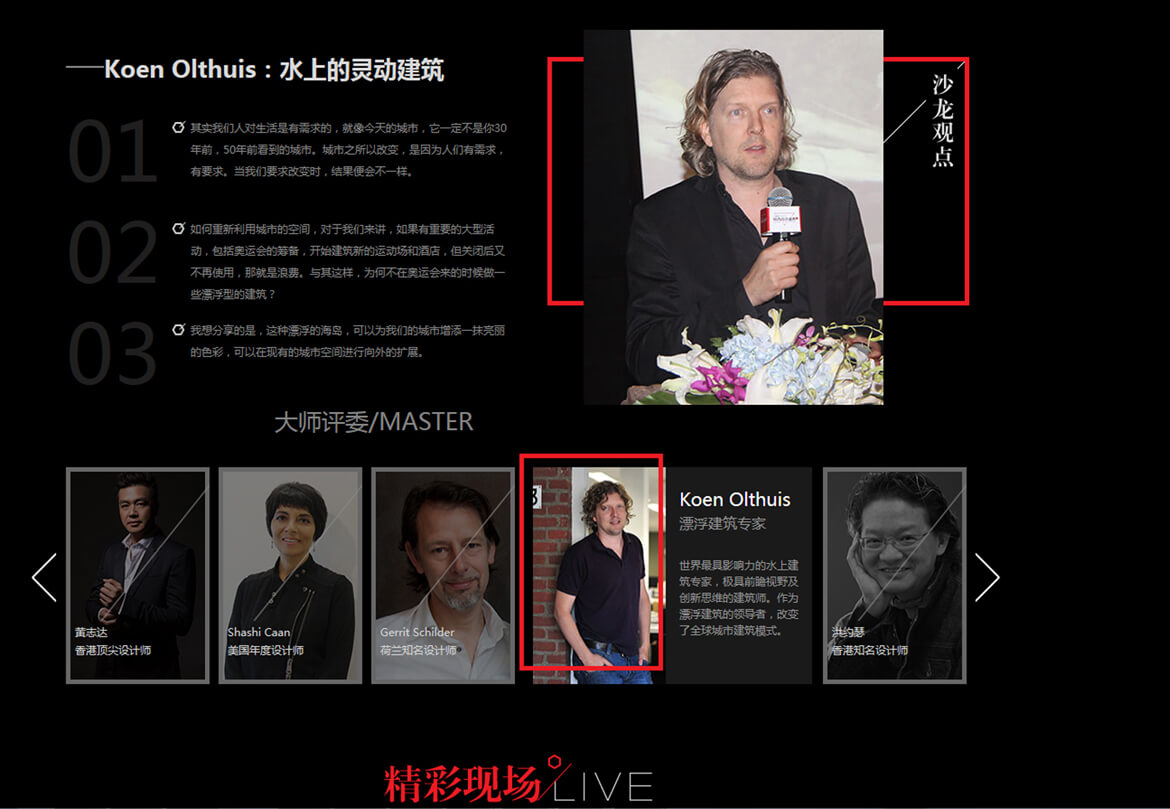
Koen Olthuis as one of the jury and speakers at the Modern Design Award for the top 10 best interior designs in Guanzhou, China 2015.
Podcast: Maldives’ Floating City?

The Seasteading Institute, Joe Quirk, Nov 2015
Interview of Joe Quirk from the Seasteading Institute with Koen Olthuis about Maldives’ floating cities.
Podcast: Maldives’ Floating City? Koen Olthuis of Waterstudio
Podcast: Play in new window
What if a nation sinking below sea level became the innovation hub for floating cities?
What if you could float the infrastructure of Holland to the slums of Bangladesh?
What if the future of floating cities is in 3D printed technology?
Dutch architect Koen Olthuis is the co-author of Float! Building on Water to Combat Urban Congestion and Climate Change with David Keuning. Koen founded Waterstudio which designs many components of floating cities, including schools, golf courses, hotels, and even stadiums, and he co-founded Dutch Docklands which plans gorgeous projects for the Maldives. In 2007, Koen was chosen at Time Magazine‘s “most influential people of the year,” and the French magazine Terra Eco chose Koen in 2011 as one of the 100 greenest persons who will change the the world.
Koen Olthuis initiated a project to transform shipping containers into Floating City Apps to upgrade living conditions in coastal slums by providing “plug-and-play” schools, kitchens, health centers, internet cafes, and water purification units.
Should seasteads establish political independence first, and then change the world? Or should floating cities set humanitarian examples, win hearts and minds, and then seek independence? Koen and I discuss the strategies and agree to partner on a shared goal.
I hope you enjoy this discussion as much as I did. And if you subscribe to podcasts on iTunes, you can find this podcast and all of our other podcasts on our iTunes page.
Joe Quirk
Why Blue is Better
Annelie Rozeboom
Hi Europe
October.2015
Architect Koen Olthuis draws on a roll of paper while explaining why we should be building our cities on the water and how he is planning to help the poor with his ideas. “As an architect, you can design towers, but every child can do that in their Minecraft game. Plus none of the towers we build now will be there in 300 years’ time. What I want to leave behind at the end of my career are concepts and ideas, the main idea is that we need to push our cities unto the water.”
Green is good, blue is better is the motto of this Dutch architect. “Our cities don’t change fast enough. We build houses and building and expect them to be used for ever, but our society changes every ten years. If parts of our cities float, we are much more flexible. The center of Amsterdam will always be the same, but the neighborhoods around it change all the time. If buildings float, you can just pull them away and put them somewhere else,” Olthuis told Hi-Europe.
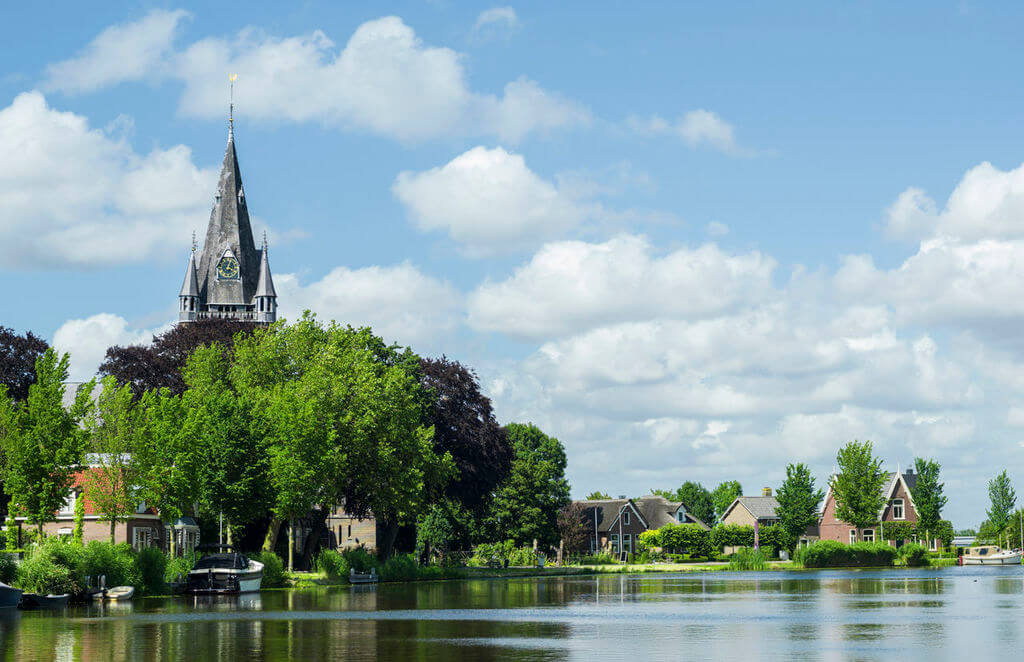
Pict: selimaksan
Working with the Water
One-half of the Netherlands is flood-prone and about one-quarter is below sea level, so it’s no wonder the Dutch spend their time developing ways to incorporate water into their style of living. The philosophy is shifting from fighting the water to living with it, or rather, on it. Instead of trying to claw back more land from the sea, developers are exploring the cost-efficiency of building homes that rise and fall with the tides. “We need to start working with the water in a more intelligent way,” Olthuis says.
This relatively new amphibious architecture is attracting interest from around the world, with floating and amphibious homes and schools now being designed for flood plains everywhere. Amphibious architecture is for both dry and wet conditions, so the houses stay dry and on the ground during normal times and then when the water arrives, they can float up.

Pict: Architect Koen Olthuis – Waterstudio.NL
Waterstudio
Olthuis wants to do much more than build a few villas. His architectural bureau Waterstudio.NL has designed complete apartment complexes, which could accommodate hundreds of people. And that is just one project. There is also a 33-meter-tall trees that can float. “Our cities have become sick environments. Green has been pushed away, but bees and other insects need quiet places. Our sea tree is like a cut-up park, which floats at a safe distance from the shore. Nature will take over on the platform and create its own ecosystem.”
Olthuis is also planning to help people in the slums of the world, which are often located on flood plains. “Worldwide you see that the most vulnerable people are being pushed into the water,” he says. This coming month he will send a floating school to Dakar – it’s a container that floats on empty plastic bottles. “The way to upgrade a slum is by installing facilities like schools and internet cafés, or easily movable small buildings that slum entrepreneurs can use. We have designed a kind of toolbox, which have 20 functions inside. This way, the entrepreneurs can choose what it is they need.”
Olthuis exports his concepts all around the globe, including to the flood zones of Hainan Island. “They have land there that they can’t use, but they will if they take our technology.” He also sells floating islands to Dubai. “Making artificial islands out of sand doesn’t work. In Dubai they built some, but they are too far away from the coast, and there is no electricity or drinking water. We are now going to put floating islands in between.”

Pict: Architect Koen Olthuis – Waterstudio.NL
Fight Against the Sea
The Dutch are famous for their age-old fight against the sea, and they have the best flood management technologies in the world. In the beginning, the people in this low country put their homes on artificial hills called terpen, but they soon started building dikes. Popular in the middle ages were wierdijken, earth dikes with a protective layer of seaweed. Later dikes had a vertical screen of timbers backed by an earth bank, but these were replaced by stones after the timber was eaten by shipworms. When the polder windmill was invented in the 15th century, it meant that land could also be drained.
The dikes around the rivers were maintained by the famers who lived next to them. Special water board directors would come to check every three years. This changed radically after a devastating North Sea flood in 1953, which resulted in 1,800 deaths. The government adopted a “never again” attitude, and built dams all around the country, guarding all main river estuaries and sea inlets. According to computer simulations, today’s defenses in the Netherlands are supposed to withstand the kind of flood so severe that it would occur only once in 10,000 years.
“We have pretty much won the fight against the sea,” architect Olthuis says. “The problem now is rainwater. Holland has 3500 low-lying polders enclosed by dykes that function as sponges – they soak up excessive rain water. However, more and more of this land is now used for housing. These are ideal places to build amphibious houses.”

Pict: Architect Koen Olthuis – Waterstudio.NL
Rising Sea Levels
Dutch scientists predict a rise in sea levels of up to 110cm by the year 2100. “We can make the dikes higher, that’s not a problem at all. Technically, all that is possible. The problem with a high dike is that when it breaks, more water will come in,” he says.
There is also growing pressure on existing land. The Dutch government estimates that 500,000 new homes will be needed in the next two decades. Most of the land suitable for conventional building has already been used up, so Dutch architects are encouraged to experiment with new solutions. “The palace in the center of Amsterdam was built on 13.654 wooden poles. It’s the densest forest in the Netherlands. There was real innovation in those times. We are built on places where there shouldn’t be land at all. It’s not about giving up, it’s about continuing to grow,” says Olthuis.
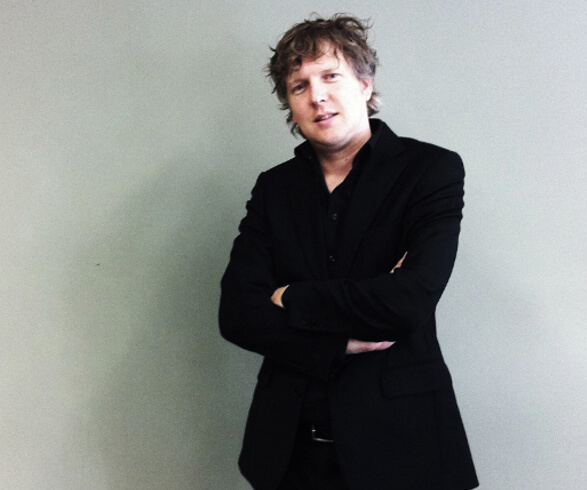
Koen Olthuis
Floating City Apps: A Lifeline for Slums
By Carol Matlack
Bloomberg Businessweek
September.2015

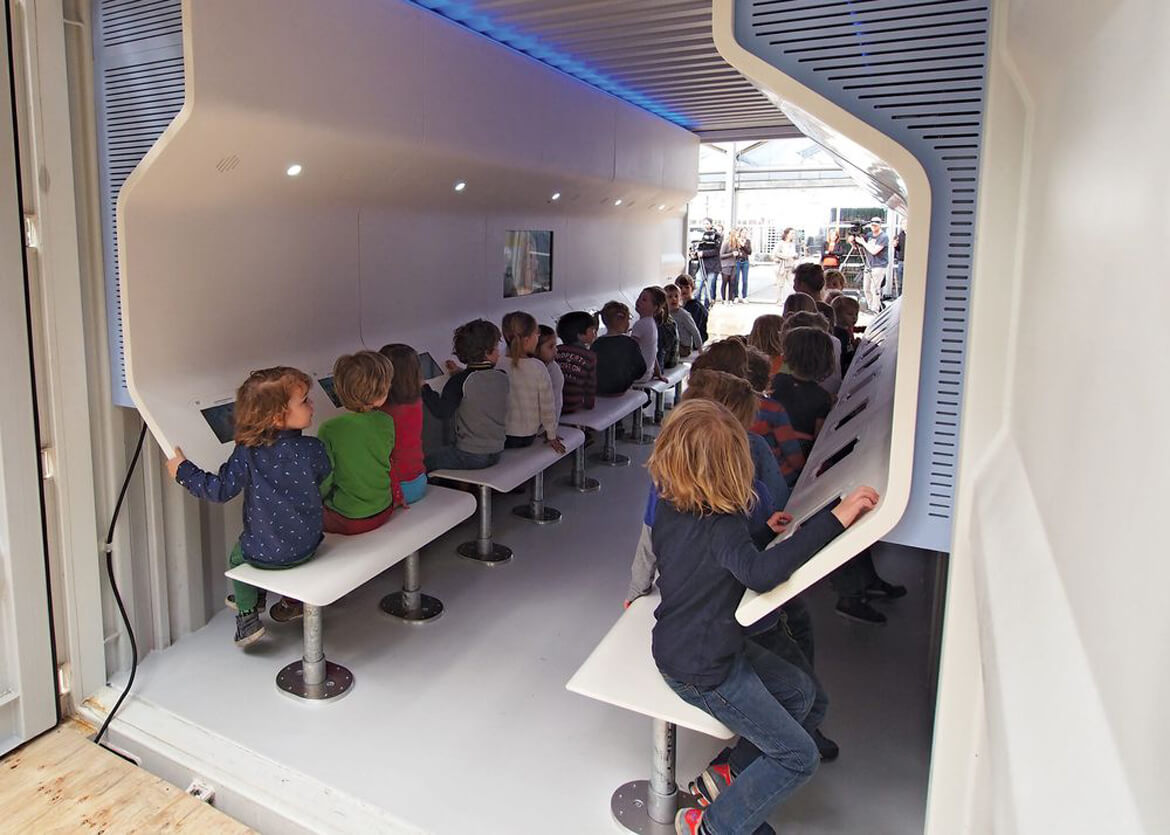
Dutch architecture firm Waterstudio uses shipping containers to build structures that benefit people living in flood-ravaged shantytowns.
Firm: Waterstudio
Location: Rijswijk, Netherlands
Total Cost: $28,000
More than 600 million people worldwide live in shantytowns that suffer chronic flooding. Because these settlements are often illegal, entrepreneurs and community groups can’t get the building permits, insurance, and bank loans to open grocery stores, health clinics, and other essential establishments.
Dutch architect Koen Olthuis thinks he has a solution: His Floating City Apps are structures built from shipping containers that can be docked alongside waterfront slums. The first, set to be deployed in Dhaka, Bangladesh, this fall, will be outfitted with 20 computer workstations. It will be used as a classroom in the daytime and as an Internet café in the evening. Unesco and local non-profit are subsidizing construction. Because the units are vessels, they will qualify for insurance and private financing, which may also make them attractive options for local business.
Olthuis’s firm, Waterstudio, specializes in waterborne architecture and building floating resort in Maldives. He wants to put some of that know-how to work for the benefit of the poor. “The architecture is simple”, he says. “But you need to have a business model”.
This demonstration unit in the Netherlands is outfitted as an education and communications center, with 20 touchscreen workstations.
SOURCE: FLOATING CITY APPS
Holländskt flyt mot stigande havsnivåer
By Sebastian van Baalen
Syre
August.2015
Sebastian van Baalen – 2 år sedan
Han kallas den flytande holländaren och har utsetts till en av världens viktigaste tänkare av the Times. Koen Olthuis är en nederländsk arkitekt som propagerar för att holländarna måste lära sig att leva med stigande havsnivåer. Men hans
idéer har implikationer långt bortom Nederländerna.
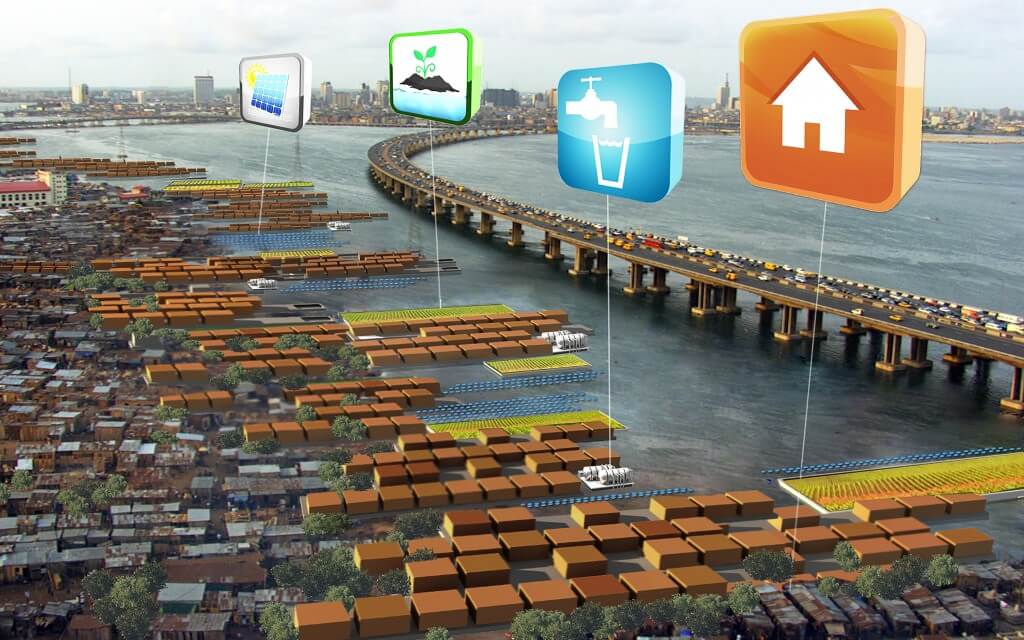 Med hjälp av cityappar vill arkitekterna på Waterstudio tillgodose grundläggande behov i världens vattennära slumområden. Foto: Sebastian van Baalen
Med hjälp av cityappar vill arkitekterna på Waterstudio tillgodose grundläggande behov i världens vattennära slumområden. Foto: Sebastian van Baalen
Nederländerna är ett av världens lägst liggande länder med omkring 20 procent av landets yta under havsnivå och ytterligare 30 procent i riskzonen för omfattande översvämningar. Men trots århundraden av erfarenhet av att bygga vallar, kanaler och pumpstationer menar arkitekten Koen Olthuis att framtiden ligger på vattnet. Han har patent på flytande husgrunder och de senaste tolv åren har han ritat över 100 flytande hus i Nederländerna.
– Lösningen fanns i familjen hela tiden, förklarar han medievant. Min mammas familj jobbade inom skeppsindustrin och min pappas familj var arkitekter. Jag har helt enkelt tagit det bästa av två världar.
Enligt Koen Olthuis är flytande byggnader lösningen på flera olika problem; stigande havsnivåer, platsbrist i storstadsområden och behovet av dynamiska städer. – Städer är inte perfekta, de är korkade. Världen förändras ständigt men städerna är statiska och kan inte anpassas snabbt nog. Genom att bygga på vattnet kan man göra staden dynamisk, funktioner kan distribueras dit de behövs, när de behövs.
Lyxbostäder och konstgjorda öar signerade Koen Olthuis finns bland annat i Dubai och på Maldiverna. I Nederländerna, ett land där platsbristen är akut, har Koen Olthuis idéer resulterat i flytande bostadsområden. I sin bok Float! propagerar han för att användningen av flytande husgrunder kan möjliggöra så kallad depolderisering i Nederländerna, det vill säga att grundvattennivån tillåts stiga i torrlagda områden. Men det var när han uppmärksammade problemet med slumområden som han insåg konceptets fulla potential.
Flytande cityappar
Enligt FN förväntas omkring två miljarder människor leva i slumområden år 2030. Dessa bosättningar är ofta semitemporära då invånarna ständigt hotas med avhysning eftersom de formellt varken äger marken eller sina bostäder, något som försvårar utvecklingen av samhällsfunktioner i dessa områden. Men detta vill Koen Olthuis ändra på med hjälp av flytande cityappar.
– Många av världens slumområden ligger vid eller på vatten. Men när vi gjorde en studie i Bangladesh nämnde sluminvånarna förvånansvärt nog inte översvämningar som det främsta problemet – det var bristen på samhällsfunktioner. Och då är vattnet lösningen!
Precis som man laddar ner appar till sin smarta telefon för att ge den funktioner som saknas menar Koen Olthuis att man kan lägga till samhällsfunktioner i vattennära slumområden. Tillsammans med ett team av unga ingenjörer och arkitekter på sitt företag Waterstudio i Haag har han utvecklat flytande containers som huserar skolor, internetkaféer, sjukhus och sanitetsanläggningar, alla drivna av solpaneler. Dessa kan fraktas till slumområdena till havs. Jiya Benni jobbar med projektet.
– I de flesta slumområden saknas de juridiska förutsättningarna för att utveckla infrastrukturen. Fördelen med dynamiska cityappar är att de inte kräver bygglov. Skulle förutsättningarna förändras kan apparna helt enkelt bogseras bort.
Den första containern är nu på väg att placeras i Dhaka i Bangladesh. Men flytande cityappar ska främst ses som ett socialt företag enligt Jiya Benni.
– Varje cityapp har en affärsidé. Tanken är att lokala entreprenörer i slumstäderna kan hyra en city app på lång sikt och betala av kostnaden över tid. När appen har spelat ut sin roll i ett visst område kan den helt enkelt flyttas vidare. Lite som ett mikrolån.
Samtidigt erkänner Koen Olthuis att kostnaden för cityapparna än så länge är för hög.
– En flytande skola kostar för närvarande 45 000 dollar. Vi måste minska priset till 18 000 dollar för att det ska bli ekonomiskt hållbart.
Marinbiologer har bland annat påpekat att flytande byggnader kan störa de marina ekosystemen. Men Jiya Benni ser inte det som ett problem. – Jämfört med att torrlägga land är flytande byggnader definitivt mer miljövänliga. Visst kan konstruktionerna påverka mängden ljus som når botten, men det går att lösa med kreativ design. Vi samarbetar med oceanografen Jean-Michel Cousteau för att utveckla våra cityappar till naturliga ekosystem för fiskar.
Vatten som möjlighet Koen Olthuis framstår lika mycket som visionär som arkitekt. I hans visioner ingår flytande grönområden, flytande flygplatser och mobila och flytande flyktingläger.
Men vad är science fiction och vad är verkligen möjligt?
Faktum är att flytande städer har existerat sedan länge och stora slumområden ligger i dag på vattnet. Ett exempel är slummen Makoko i Nigera som är hem åt tiotusentals människor. Liknande samhällen återfinns i Hong Kong och Vietnam. Investeringar i sådana områden är ofta riskfyllda då infrastruktur riskerar att förstöras vid översvämningar. Även rikare länder har insett såväl nyttan som det estetiska med flytande byggnader; Seoul har en flytande ö på Hanfloden, Rotterdam ett mobilt konferens- och utställningskomplex på Nieuwe Maasfloden och Bristol en flytande plantträdgård. Men för Koen Olthuis handlar det om att förändra hur vi förstår staden.
– Mitt budskap är att vatten inte enbart är ett hot, utan också en möjlighet. Jag hoppas att det vi gör, mina idéer, kan spridas och locka människor att tro på idén. Min vision är att förbättra städer i hela världen.


